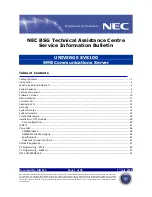
Chapter 2. Architecture and technical overview
109
Draft Document for Review October 14, 2014 10:19 am
5137ch02.fm
The on-die nature of the OCC allows for approximately 100× speedup in response to
workload changes over , enabling reaction under the timescale of a typical OS
time slice and allowing for multi-socket, scalable systems to be supported. It also enables
more granularity in controlling the energy parameters in the processor, and increases
reliability in energy management by having one controller in each processor that can perform
certain functions independently of the others.
POWER8 also includes an internal voltage regulation capability that enables each core to run
at a different voltage. Optimizing both voltage and frequency for workload variation enables
better increase in power savings versus optimizing frequency only.
2.13.3 Energy consumption estimation
Often, for Power Systems, various energy-related values are important:
Maximum power consumption and power source loading values
These values are important for site planning and are described in the hardware
information center that is found at the following website:
http://pic.dhe.ibm.com/infocenter/powersys/v3r1m5/index.jsp
Search for type and model number and “server specifications”. For example, for the
Power S814 and Power S824 system, search for “8286-41A” or “8286-42A server
specifications”.
An estimation of the energy consumption for a certain configuration
The calculation of the energy consumption for a certain configuration can be done in the
IBM Systems Energy Estimator, found at the following website:
http://www-912.ibm.com/see/EnergyEstimator/
In that tool, select the type and model for the system, and enter some details about the
configuration and wanted CPU usage. As a result, the tool shows the estimated energy
consumption and the waste heat at the wanted usage and also at full usage.
















































